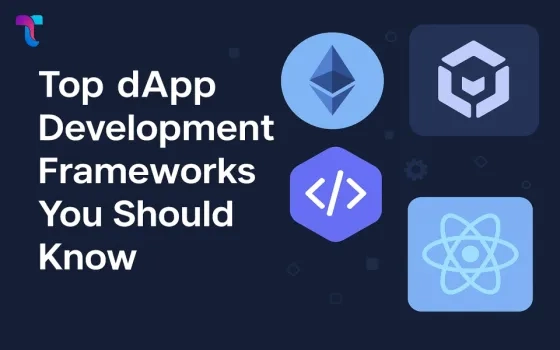In the ever-evolving digital world, businesses are always looking for new and innovative tools to help them stay ahead of the competition. But with the emergence of no-code and low-code platforms, businesses have unprecedented access to powerful development capabilities without needing to hire expensive developers. Read on to learn more about how this technology will revolutionize businesses in 2023!
Introduction to No-Code and Low-Code Adoption
The term “no-code” or “low-code” refers to the concept of building applications without writing code. This can be done using a visual drag-and-drop interface, or by connecting different software components together without writing any code.
There are a number of reasons why businesses might want to adopt no-code or low-code solutions. First, it can save time and money. Developing custom applications from scratch can be costly and time-consuming. Using a no-code or low-code platform can help businesses get their applications up and running more quickly and cheaply.
Second, no-code and low-code platforms can make it easier for non-technical users to build applications. This is because they do not require any coding knowledge to use. As a result, businesses can empower a wider range of employees to build custom applications, without having to invest in training them in coding skills.
Finally, no-code and low-code platforms tend to be more flexible than traditional application development approaches. This means that they can be easily adapted to changing business needs over time.
No-code and low-code adoption is predicted to increase in the coming years as businesses look for ways to save time and money, empower non-technical users, and achieve greater flexibility in their application development.
Predictions for No-Code and Low-Code Adoption in 2023
There is no doubt that no-code and low-code platforms are becoming more popular among businesses of all sizes. In fact, a recent study by Forrester predicts that the no-code development market will reach $32.8 billion by 2023. This is a significant increase from the $13.8 billion estimated in 2018.
So, what is driving this growth? One of the main reasons is that these platforms enable businesses to develop applications much faster and with less expensive than traditional methods. Additionally, they require less technical expertise, making them accessible to a wider range of users.
As no-code and low-code adoption continues to grow, we expect to see more businesses using these platforms to develop a wide range of applications, including custom business applications, web portals, mobile apps, and more. Here are some specific predictions for no-code and low-code adoption in 2023:
1. More businesses will use no-code and low-code platforms for custom business application development.
2. Web portals will continue to be one of the most popular types of applications developed on these platforms.
3. Mobile app development on no-code and low-code platforms will grow significantly as businesses look to take advantage of the benefits offered by these technologies for developing mobile apps quickly and efficiently.
4. We will see an increase in the use of no-code and low code integration tools as businesses look to seamlessly connect their various applications
Impact of No-Code and Low-Code Adoption on Business Productivity
The impact of no-code and low-code adoption on business productivity is predicted to be significant. Businesses that adopt these technologies are expected to see increased efficiency and effectiveness in their operations. The following are some specific predictions for how no-code and low-code adoption will impact business productivity:
1. Increased efficiency in business operations - No-code and low-code platforms enable businesses to automate many of their tasks and processes. This can lead to significant efficiency gains in businesses, as they will be able to get more work done with fewer resources.
2. Enhanced decision making - With no-code and low-code platforms, businesses will have access to real-time data and analytics. This will help them make better decisions about their operations, as they will be able to track progress and identify areas for improvement more easily.
3. Improved communication and collaboration - No-code and low-code platforms facilitate communication and collaboration between team members, which can lead to better coordination of work tasks and improved overall productivity.
4. Greater flexibility and agility - No-code and low-code platforms give businesses the ability to rapidly develop new applications and adapt existing ones to changing needs. This can help businesses stay ahead of the curve and respond quickly to market changes.
Benefits of No and Low Code Adoption for Businesses
There are many benefits of no-code and low-code adoption for businesses. Here are some of the most important ones:
1. Increased efficiency and productivity: With no-code and low-code platforms, businesses can develop applications much faster than traditional methods. This means that they can get new products and services to market faster, and can respond quickly to changes in the market.
2. Reduced costs: No-code and low-code platforms require less investment in terms of time and money, since they allow businesses to develop applications without needing to hire expensive developers or purchase costly software licenses.
3. Improved user experience: No-code and low-code platforms make it easy for non-technical users to create and customize applications according to their specific needs. This results in a better user experience, as users are not limited by the technical constraints of traditional development methodologies.
4. Increased flexibility: No-code and low-code platforms offer a high degree of flexibility, as they can be easily modified or extended to meet changing business requirements. This allows businesses to rapidly adapt their applications to suit their evolving needs.
Challenges Faced by Organizations with No and Low Code Adoption
Organizations that have not yet adopted no-code or low-code platforms face a variety of challenges. Perhaps the most significant challenge is simply getting started. With so many options on the market, it can be difficult to know where to begin. Additionally, these platforms can require a significant investment of time and resources to implement properly. Organizations may also need to overcome resistance from employees who are hesitant to embrace change.
Once an organization has made the decision to adopt a no-code or low-code platform, there are still many challenges that must be addressed. One of the biggest challenges is simply understanding how these platforms work and what they are capable of. There is a learning curve associated with using these tools effectively, and organizations will need to invest time and resources into training employees. Additionally, these platforms may need to be customized to fit the specific needs of the organization, which can add even more complexity.
How To Structure Your Team For No and Low Code Adoption?
There are a few key things to keep in mind when structuring your team for no-code and low-code adoption. First, it's important to have a dedicated space for your no-code and low-code initiatives. This will help ensure that these initiatives are given the attention they deserve and aren't crowded out by other projects.
Next, you'll want to make sure that you have the right mix of skills on your team. Some essential skills for no-code and low-code adoption include business analysis, application design, and user experience design. Having at least one member of your team with each of these skills will help ensure that your no-code and low-code projects are successful.
Finally, it's important to remember that no-code and low-code adoption is a journey, not a destination. As such, it's important to have patience and be prepared for bumps in the road. By keeping these things in mind, you can set your team up for success as you embark on your no-code and low-code journey.
Best Practices for Businesses
When it comes to adopting no-code or low-code platforms, there are a few best practices that businesses should keep in mind. First and foremost, it’s important to have a clear understanding of what business problems you’re trying to solve with no-code or low-code. Once you know what you’re trying to achieve, you can more easily select the right platform and tools for your needs.
It’s also important to carefully consider the cost of no-code or low-code platforms and tools. While these platforms can save businesses money in the long run, there is often an upfront cost associated with adoption. Make sure you have a solid plan in place for how you’ll finance your no-code or low-code adoption.
Finally, don’t forget to involve your IT team in the process. While no-code and low-code platforms are designed to be user-friendly, your IT team will still need to be involved in order to ensure a smooth transition. By involving your IT team from the start, you can avoid any potential roadblocks down the line.




























